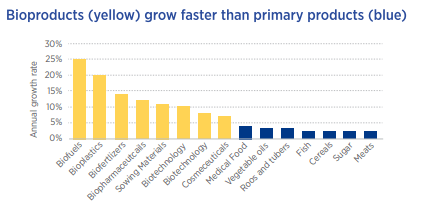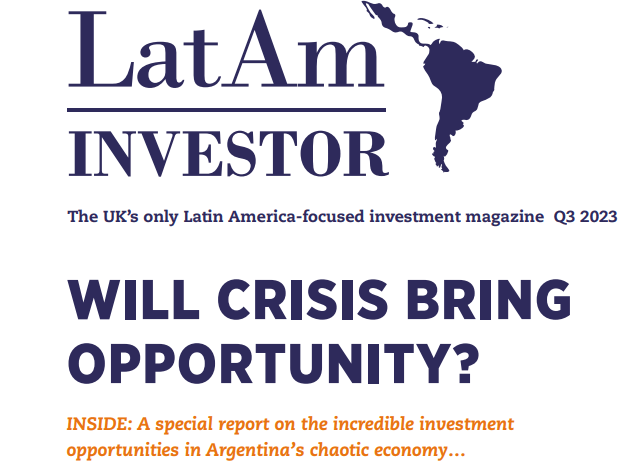Write Marcelo Regúnaga, Agustín Tejeda and Paloma Ochoa from the Group of Producing Countries from the Southern Cone (GPS)- for ARGENTINA 2030 REPORT from LatAm Investor
The world is facing multiple and complex challenges. A growing population and climate change are increasing food insecurity and putting pressure on the planet’s scarce resources. All of these are paving the way for a new global paradigm: replacing the fossil economy with one based on biology.
In a world dominated by the convergence between electronic and biological technologies, with high demands for food and energy, Argentina can provide solutions. In terms of the international market, Argentina is the third-largest net food exporter and is among the world’s main suppliers in value chains such as soybeans, corn, wheat, peanuts, and lemons, among other products. In 2021, agro-industrial value chains represented more than 20% of its Gross National Income.
Thanks to its many strengths, the Argentine agroindustrial sector can follow a path of strong and sustainable growth. Since the 1990s, the sector has undergone significant changes thanks to technological innovations that have allowed Argentina to increase its productivity and competitiveness. Known as the “Sustainable Intensification Strategy”, it is based on the principles of conservation agriculture. Argentina’s greenhouse gas emissions relative to GDP have decreased significantly between 1990 and 2020, indicating a remarkable improvement in production efficiency from an emissions perspective. These efforts are complemented by developments in the country’s biotech and ag-tech sectors.
Bioeconomy explained
Bioeconomy involves the efficient and sustainable production of biomass and its subsequent transformation into food, renewable energy, biomaterials and other eco-systemic services. It can reposition Argentina on a global level, given the country’s abundant endowments of natural resources and biotech capabilities. The bioeconomic nodes function as a set of processes with their inputs (physical and codified knowledge), operating routines and relationships with the subsystem. The bioeconomy strategy allows a sustainable long term development with high potential for the country and the region, based on the production and industrial transformation of biomass adding value to goods and other services. These processes involve:

- The capture of free energy – sunlight, tidal, wind – and its transformation into biomass.
- The processing of biomass into high value food
- The efficient and comprehensive transformation of biomass from various sources into conventional and advanced bioenergies (bioethanol, biodiesel, biogas).
- The use of various biomasses -through different technologies- to produce biomaterials (typically bioplastics and biochemicals).
- The activities of value-adding to by-products and derivatives of les economic relevance to generate energies and bioproducts (fertilizers).
- The transformation of waste and residues into industrial inputs and bioenergies.
The first node, biomass generation, has a high potential for development, based on Argentina’s natural endowments and strong production systems. Especially interesting, and probably a fertile field for investment, are projects in grain and livestock genetics, as well as in areas related to animal and plant health.
In the second node, the development of biomaterials shows a clear strategic potential. Although the arrival to market of bioplastics is still quite limited, these products should be quite easy to slot into existing industrial processes, replacing plastics.
Conventional bioenergies have already a strategic relevance and a significant market presence, thanks to their early development in Argentina. Advanced biofuels are promising because they are strategically important but production remains low. There is huge development potential based on future biotech innovations.
Two possible areas of development and investment can be identified. The first consists of specialty productions (cosmetics, food, industry), based on the use of natural chemical inputs that can replace similar petrochemical derivatives. The second refers to the strategic importance of the production of enzymes and other microorganisms destined to operate in the different transformations of biomasses.
As the production and supply of biomass in Argentina is distributed throughout the country, the benefits of the bioeconomy could bring sustainable growth and job creation in every part of the country. Moreover, Argentina’s immense size and biodiversity means it can provide a wide range of the bio-products and services that the global market demands. As shown in the graph, bio products have a much higher growth rate than traditional products in the international markets – a trend that will likely accelerate in the future.

The bioeconomy opens a window of opportunity for Argentina to grow based on a new sustainable development model. Unlike past industrial revolutions – based on fossil fuels and inert materials – which our country accessed late and at a disadvantage compared to developed countries, the new paradigm finds us with favourable endowments of natural resources (biomass), and with scientific and technological advances in our agro-industrial sectors and processing facilities in various productive networks, such as food and bioenergy. Promoting bioeconomy, understood as the group of industries that make use of biological processes and resources, gives us an opportunity to enhance the contribution already made by agro-industrial value chains, by encouraging interaction between biomass production and processing, innovation, science and technology. The agro-industrial sector can and should be one of the pillars of a new development strategy for the country, and a key part of the international positioning of Argentina a reliable and sustainable provider of food, bioenergy and other biobased goods and services.



